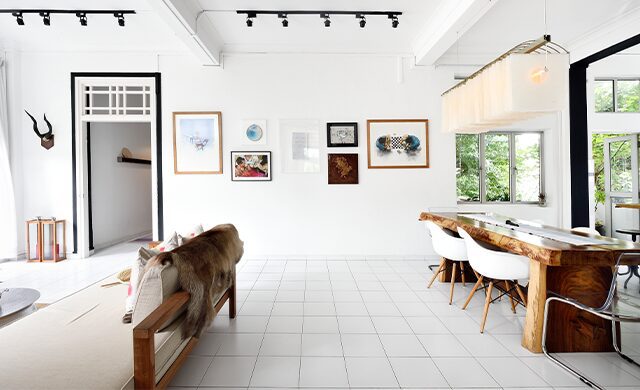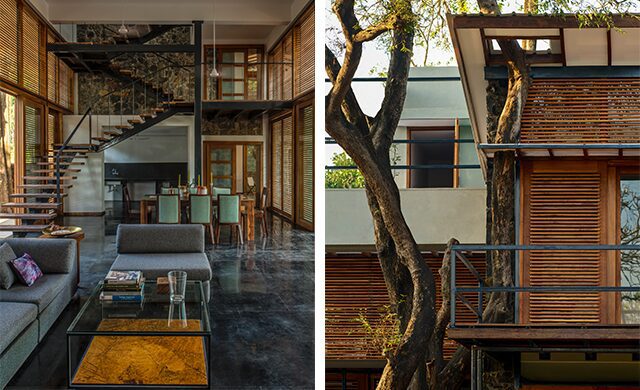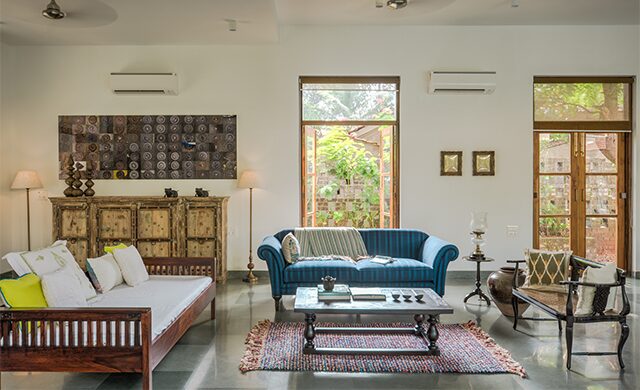In seeking to reconnect to nature through her architectural practice, Anjali Mangalgiri makes the following promise: “Whenever we work on a site, we leave it as pristine or in a better state than how we found it.” Based in Goa and Singapore, her five-person team at Grounded designs and builds second homes on greenfield land in India, collaborating with or providing consultancy services to owners in a unique architect-developer model. “We source land with spectacular views and design bespoke homes that respond to its topography and natural conditions,” she explains. “Owners can come onboard at any time. Primarily, what they’re attracted to is our approach, which is far from cookie-cutter.”
The homes that Grounded constructs for the leisure lifestyle market are an answer to the increasing vulnerabilities of India’s big cities, from which residents want to escape on weekends and holidays for their own wellbeing. The model nurtured by Mangalgiri is inspired by two factors: “When I was working [at HOK] in New York, I found that our pitches for sustainability weren’t often implemented because of policy or budget constraints, so I decided to complete a master’s in real estate development at Columbia to have a seat at the decision-making table.”

Simple interiors in the Navovado vacation home in Goa enhance views of the verdant landscape
By this stage in her career, she had graduated with a bachelor’s degree from her home city of Delhi, followed by earning a master’s degree from MIT, for which she moved to the U.S. in 2003. She loved working, studying, and living in New York, but on trips back to India, she noticed that while the country was rapidly developing, the quality of construction seemed stagnant, throwing up the same old problems. “Don’t get me wrong,” she says. “There are a lot of great architects and thought leadership, but there seemed to be a gap in talking the talk and implementation.” Wanting to show that things could be done differently, Mangalgiri returned to Asia in 2010 to set up Grounded, first in Goa, then in Singapore five years later.

A collaboration with Architecture R/T, the Nivim country home in Goa perches on a tree-lined slope
One of the firm’s current projects, House With Three Pavilions, says much about its distinctive philosophy. Spread over 1.5 acres overlooking rice fields in Goa, the estate home includes three pavilions that connect around an ancient Kokum tree centered on a seasonal pond—a magnet for insect and bird life. From the red terracotta tiles selected for the roofs of the pavilions, rainwater—along with other surface runoff across the estate—is directed to the pond, where a system of bioswales increases percolation and contributes to the recharging of the water table. Functioning as two residential annexes and a recreational complex positioned among the coconut grove, the estate home benefits from shaded verandas, single-story construction, combinations of local laterite and eco-friendly fly ash brick; cooling stones and cement help to cope with high humidity. Indoor-outdoor spaces are interwoven, maximizing ventilation while affording monsoon protection, with landscaping also designed by Grounded.
“It’s about minimal architectural intrusion and the conservation of natural resources,” Mangalgiri observes. “We don’t want to hamper environments.” She is quick to point out that reconnecting to nature can happen anywhere. During the recent lockdown, her concerns about climate change and how cities in particular can offer that all-important link have intensified as she continues to reinvent the way in which development can be approached.

Earthen hues and teak furniture complete the natural look in Navovado
This article originally appeared in HD’s July 2020 issue.


